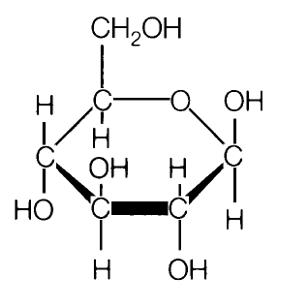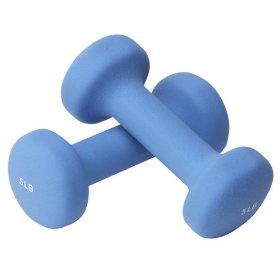A Time for Every Carb…
Let me tell you a little story about one of my first post-op experiences in the gym. I was on the treadmill. I was walking fast (or fast for me at the time). There was wind in my hair, sweat on my face and then all of a sudden…the room got very, very dim and started spinning. I felt like someone had stuck a spigot in my back and drained all my energy.
Thankfully, I gripped the handles of the treadmill and pulled the emergency stop plug (if this ever happens to you PLEASE do the same!). I was cold. I was shaky. I was tired. I was carb deprived.
This was in the midst of my “all carbs are evil” post-op phase (it’s really a phase…seriously!) and I hadn’t given my body the fuel it needed for sustained activity. So it gave out on me. Traitor!
The Glucose/Glycogen Factor
OBLIGATORY DISCLAIMER: this is an extremely simplified account of how your body uses carbs. For more in-depth information, I suggest independent research!
Carbs are important for a variety of reasons, but especially if you are planning to get active. They provide your body with the energy you need to get going and stay going through your workout.
When the body stores carbs as an energy source, it does so by first converting it into glucose, or blood sugar. Glucose is an extremely simple sugar that’s easy to burn, making it a good source of energy for your body in a pinch.
If there is “left over” glucose that your body doesn’t need, it first stores it in your muscles and liver as a molecule called glycogen. Now when your body doesn’t need all that energy to maintain your activity levels, it turns it into body fat for longer-term storage.
But when you DO need it – mainly when you are doing exercise that sustains your heart rate an elevated level for a prolonged period of time – your body will use both glucose and glycogen to get you through. But your body only has a limited supply of the stuff readily available so when that runs out and your body is still burning calories at an elevated rate (true fact, your body continues to burn many calories even after you stop exercising), your body must turn to burning fat.
Anecdotally, I can say that I can feel when my glycogen stores run out. I can feel a temporary dip in my energy level, a feeling of weakness, maybe a little light-headedness. Then your body gets into gear and you recover. This critical moment is the point where many weight loss gurus tell you to “dig deep and find something within you to keep you going.” It is my most sincere hope that that something ends up being my Buddha belly. Just sayin…
So what does this all mean to you?
This means that if you plan to take on exercise, you should not endeavor to cut all carbs out of your life. You shouldn’t even endeavor to cut all simpler carbs out of your life.
Many exercise experts advise that before a strenuous workout, you should have a snack made up of carbohydrates and some protein. They advise against eating a lot of fiber before a workout, however (we’ll talk about fiber tomorrow). That leaves you at the simpler end of the carb continuum. Now why is that? Well, the body can’t access more complex carbs as quickly and the energy it takes your body to burn more complex carbs diverts energy you need to…you know…not DIE on the treadmill.
Now, just because you work out does NOT mean you have an open license to eat potato chips before you go to the gym. But having some yogurt with fruit in it (especially a no-sugar added and lowfat variety) is not a terrible thing. My personal favorite pre-workout snack is a banana with some peanut butter (surprise, surprise). Especially when I am doing strength training that gives me the carbs, fat and protein I need to get through the whole thing (we’ll talk about how fat factors into the equation in our next series).
…And a time for whole grains & more complex carbs
There is also a time for whole grains & more complex carbs (like vegetables), although you already knew that. It’s a good idea to eat whole grains, along with some protein for snacks. Why? For newbies, the hunger is sometimes completely absent but for us “veterans” hunger between meals can be an issue. To stave it off (and prevent dips in blood sugar and other types of glorious post-op metabolism wonkiness), a good complex carb with some protein can help. Roasted soy beans are good as are fruit with yogurt or peanut butter (although note that peanut butter is primarily a source of fat with high protein content so…moderation!).
And as I said before, complex carbs contain fiber, which keeps you regular. Regularity is a blessing after surgery. I’m sure you’ll all agree.
One important thing to note is that the recommended daily intake of fiber is about 25g a day for women, 30g a day for men. In order to get that much fiber you HAVE to take in a decent amount of carbs. Because our bodies can’t absorb fiber, they don’t count in our net carb count for the day. Simply put, there is no way to fiber but through carbs. And trust me when I say you WANT to get an adequate amount of fiber.
So…in summary, there is a time for every carb because:
- The body converts carbs into glucose that can be burned quickly for energy
- Excess glucose gets turned into glycogen that is stored in the muscles but your body can still use it if it needs it
- Excess glycogen is stored as fat. Your body burns fat when you sustain your heart rate long enough to go through your stores of glycogen
- It’s good to have a healthy carb/protein snack (not refined carbs no matter how healthy they claim to be) before a workout
- More complex carbs can keep you sated and keep your blood sugar levels sustained for longer periods of time, making them an ideal part of a good snack
- More complex carbs contain fiber, which is essential in staying regular
<< Part two: Simple vs. Complex Carbs: why it’s not that simple…
 Bariatric Foodie Play with your food
Bariatric Foodie Play with your food





